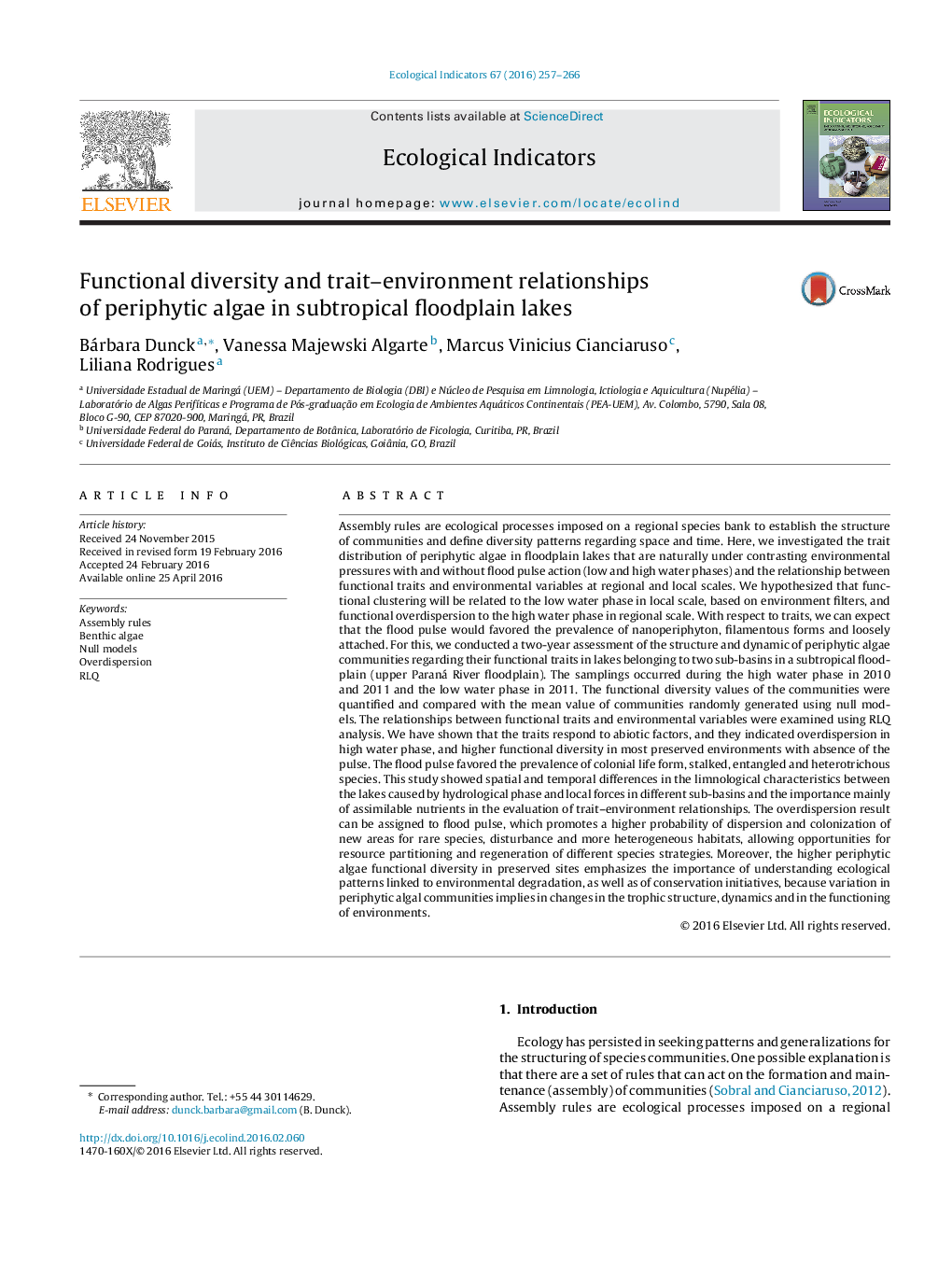| Article ID | Journal | Published Year | Pages | File Type |
|---|---|---|---|---|
| 4372873 | Ecological Indicators | 2016 | 10 Pages |
Assembly rules are ecological processes imposed on a regional species bank to establish the structure of communities and define diversity patterns regarding space and time. Here, we investigated the trait distribution of periphytic algae in floodplain lakes that are naturally under contrasting environmental pressures with and without flood pulse action (low and high water phases) and the relationship between functional traits and environmental variables at regional and local scales. We hypothesized that functional clustering will be related to the low water phase in local scale, based on environment filters, and functional overdispersion to the high water phase in regional scale. With respect to traits, we can expect that the flood pulse would favored the prevalence of nanoperiphyton, filamentous forms and loosely attached. For this, we conducted a two-year assessment of the structure and dynamic of periphytic algae communities regarding their functional traits in lakes belonging to two sub-basins in a subtropical floodplain (upper Paraná River floodplain). The samplings occurred during the high water phase in 2010 and 2011 and the low water phase in 2011. The functional diversity values of the communities were quantified and compared with the mean value of communities randomly generated using null models. The relationships between functional traits and environmental variables were examined using RLQ analysis. We have shown that the traits respond to abiotic factors, and they indicated overdispersion in high water phase, and higher functional diversity in most preserved environments with absence of the pulse. The flood pulse favored the prevalence of colonial life form, stalked, entangled and heterotrichous species. This study showed spatial and temporal differences in the limnological characteristics between the lakes caused by hydrological phase and local forces in different sub-basins and the importance mainly of assimilable nutrients in the evaluation of trait–environment relationships. The overdispersion result can be assigned to flood pulse, which promotes a higher probability of dispersion and colonization of new areas for rare species, disturbance and more heterogeneous habitats, allowing opportunities for resource partitioning and regeneration of different species strategies. Moreover, the higher periphytic algae functional diversity in preserved sites emphasizes the importance of understanding ecological patterns linked to environmental degradation, as well as of conservation initiatives, because variation in periphytic algal communities implies in changes in the trophic structure, dynamics and in the functioning of environments.
